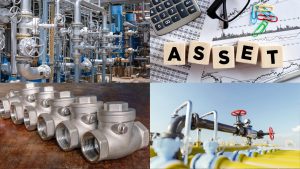The utility sector in Australia is undergoing a significant transformation, driven by the increasing availability and use of big data and artificial intelligence (AI). Big data refers to the large and complex datasets generated by utilities such as energy, water, and gas providers, while AI involves using algorithms to analyse and make predictions based on that data. These technologies are transforming the way utilities operate, enabling them to improve efficiency, reduce costs, and enhance customer experience. This transformation is set to accelerate in the coming years, as utilities increasingly adopt new technologies and embrace the opportunities presented by big data and AI. In this context, it is clear that big data and AI will be the driving force behind the future of Australia’s utility sector.
Big data and AI are transforming the utility industry in Australia and bringing a whole new era of possibilities. These technologies offer utilities new opportunities to improve efficiency, reduce costs, enhance customer experience, and promote renewable energy sources. In this article, the reader will be elucidated on how AI and big data birth a whole new era for the Utility Industry in Australia.
Digital Transition and Its Impact on the Australian Utility Industry
The utility industry in Australia has been traditionally characterised by high levels of regulation, slow innovation, and limited competition. However, the increasing availability and use of big data and AI are transforming the sector and creating a new era of possibilities. In this article, we will explore how big data and AI are changing the landscape of the utility industry in Australia and what benefits these technologies can bring.
Data Collection and Analysis

One of the most significant ways in which big data and AI are transforming the utility industry is through the collection and analysis of data. Utilities generate vast amounts of data on energy consumption, water usage, and gas distribution, among other things. With the advent of big data, utilities can now collect and store this data in a centralised location, allowing for more efficient analysis and decision-making.
AI algorithms can analyse this data to identify patterns and make predictions, enabling utilities to optimise their operations and improve efficiency. For example, predictive maintenance algorithms can identify potential equipment failures before they occur, allowing utilities to schedule repairs and avoid downtime. This not only improves reliability but also reduces maintenance costs.
Efficient Customer Services

With the use of big data and AI, utilities can provide customers with personalised and efficient customer service through the implementation of chatbots and natural language processing. These technologies allow utilities to quickly and accurately respond to customer inquiries and resolve issues, without the need for costly call centres. Customers can receive support at any time, without the need to wait on hold for a representative. Additionally, AI algorithms can analyse customer data to identify patterns and make recommendations, such as offering energy-saving tips or suggesting products and services that may be of interest. By improving customer service, utilities can enhance customer satisfaction and loyalty while also reducing costs and increasing efficiency.
Ubiquitous Integration and Updatedness

The use of big data and AI can help utilities to integrate renewable energy sources into the grid more effectively by predicting energy demand and adjusting the supply accordingly. With the increased adoption of renewable energy sources such as solar and wind power, utilities face the challenge of balancing supply and demand. AI algorithms can analyse data on weather patterns, energy consumption, and energy production to predict demand and optimise supply accordingly. By doing so, utilities can ensure that renewable energy sources are used as efficiently as possible, reducing waste and improving the reliability of the grid. Additionally, AI algorithms can be used to forecast energy prices, allowing utilities to adjust their operations and take advantage of market trends. As such, the use of big data and AI is essential for the integration of renewable energy sources into the grid and the transition to a more sustainable energy future.
Are There Any Drawbacks?
While the use of big data and AI offers numerous benefits to the utility industry in Australia, there are also some potential drawbacks to consider. One such drawback is the cost of implementing these technologies. The adoption of big data and AI requires significant investment in hardware, software, and skilled personnel, which may be a barrier for smaller utility companies. Another concern is the potential for data privacy and security issues. As utilities collect and store large amounts of sensitive customer data, there is a risk of data breaches and cyber-attacks. Therefore, utilities must prioritise the protection of customer information and invest in robust cybersecurity measures.
Furthermore, there is a risk that the use of big data and AI could result in job losses as certain tasks are automated. This can create social and economic challenges, particularly in regions that rely heavily on the utility industry for employment. Finally, the implementation of AI and big data can also raise ethical concerns, particularly with regard to data bias and discrimination. It is important for utilities to ensure that their algorithms are fair and unbiased and do not perpetuate existing societal inequalities. Overall, while big data and AI offer significant benefits to the utility industry, it is important to carefully consider and address any potential drawbacks in order to ensure a smooth and effective transition to these technologies.
What Must We Expect?
In conclusion, the use of big data and AI is transforming the utility industry in Australia, providing numerous benefits that are helping to optimise operations and improve customer service. With advanced analytics, machine learning algorithms, and real-time data insights, utilities can predict equipment failure, optimise energy supply, and integrate renewable energy sources into the grid more efficiently. Moreover, big data and AI are enabling utilities to provide more personalised and efficient customer service at scale, reducing costs associated with call centres and improving customer satisfaction. The implementation of these technologies, however, does require significant investment in hardware, software, and skilled personnel, and there are concerns about data privacy and security, job losses, and ethical considerations.







